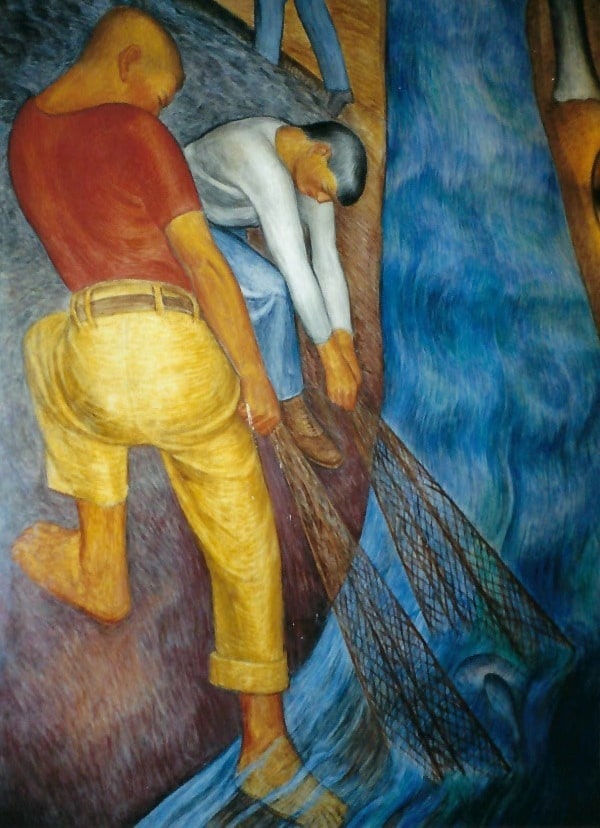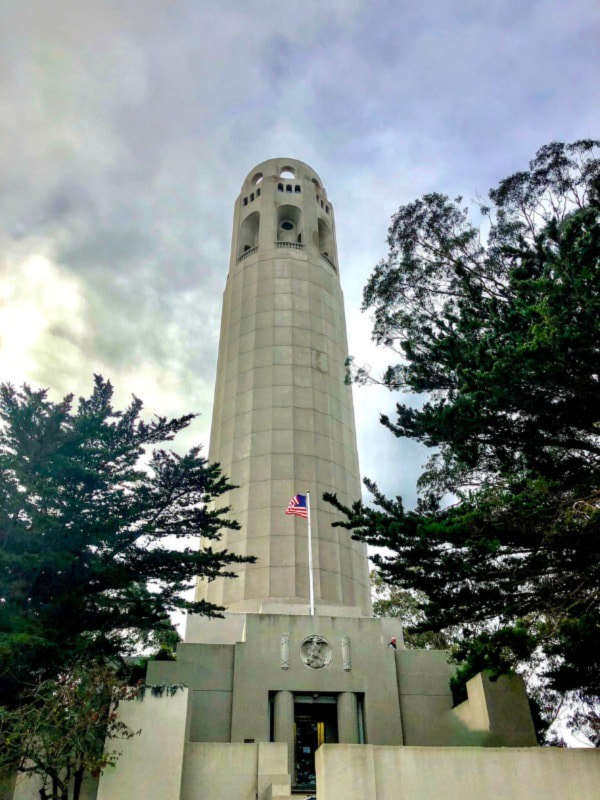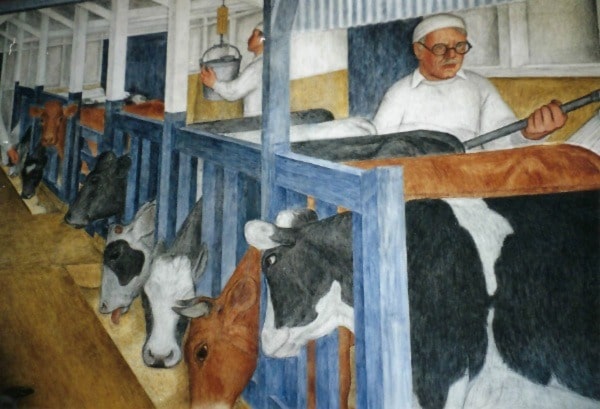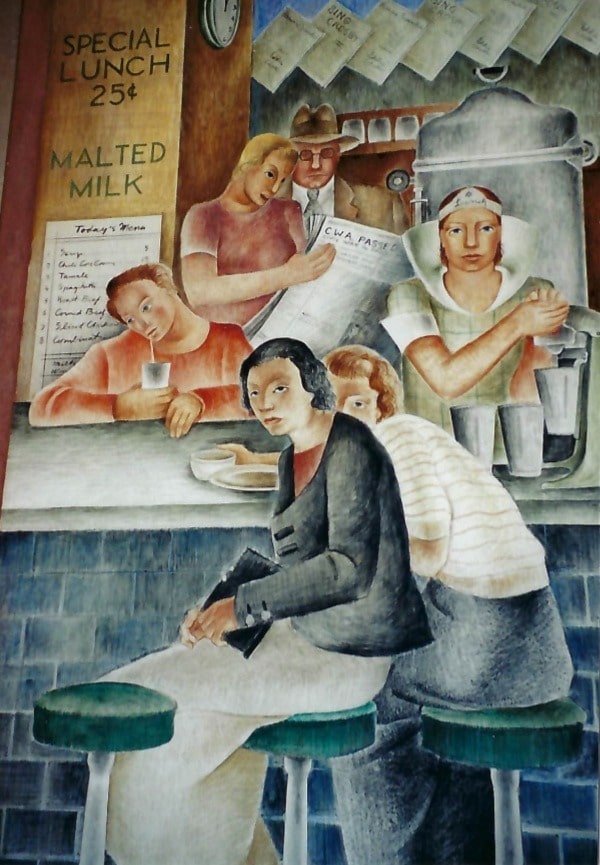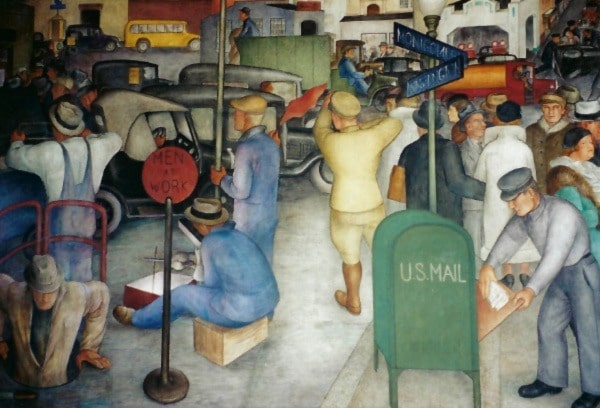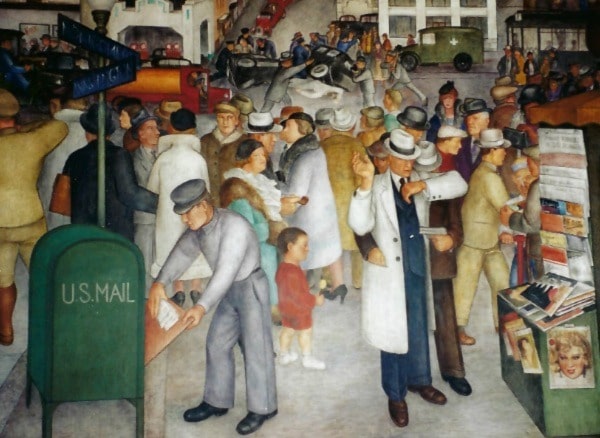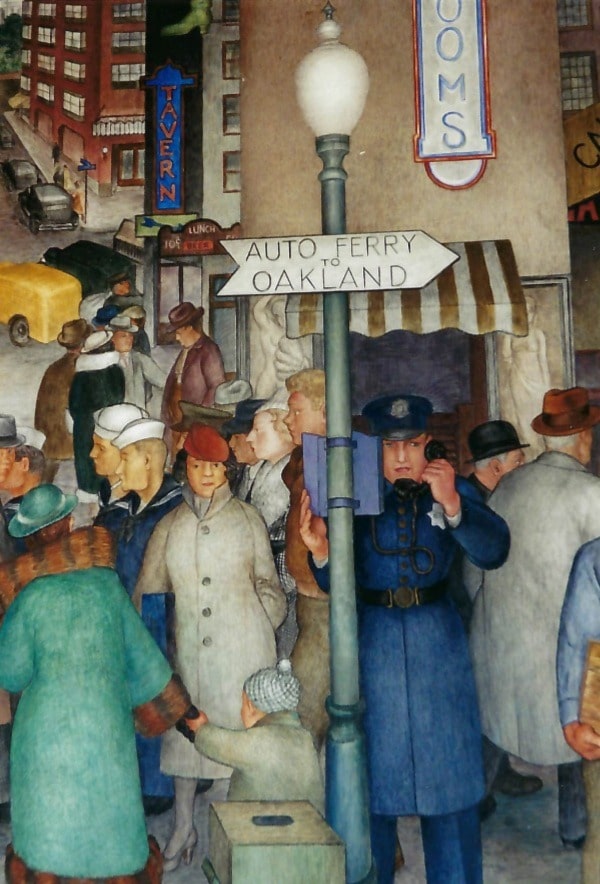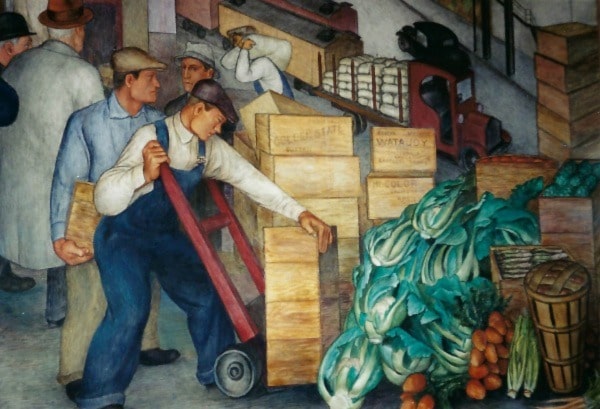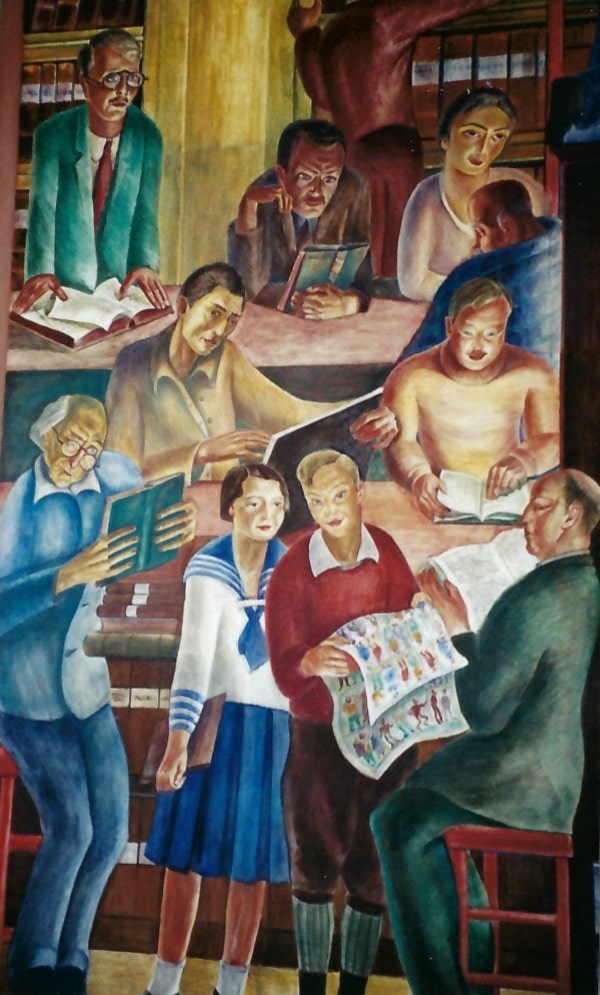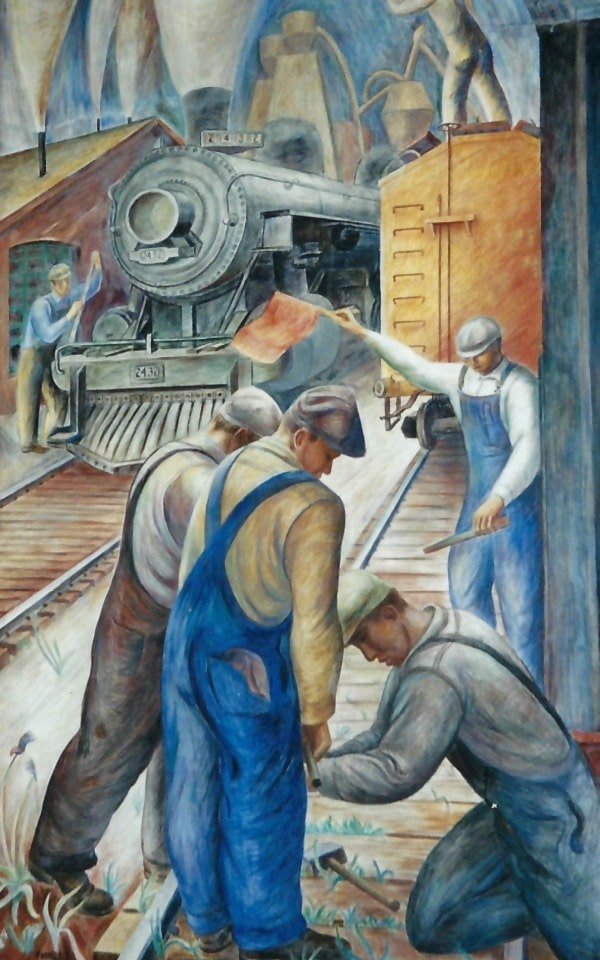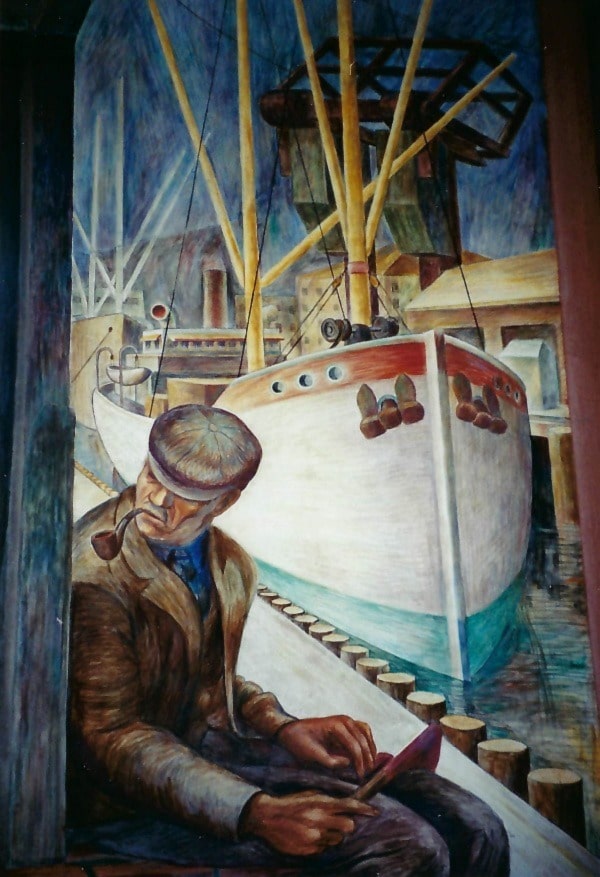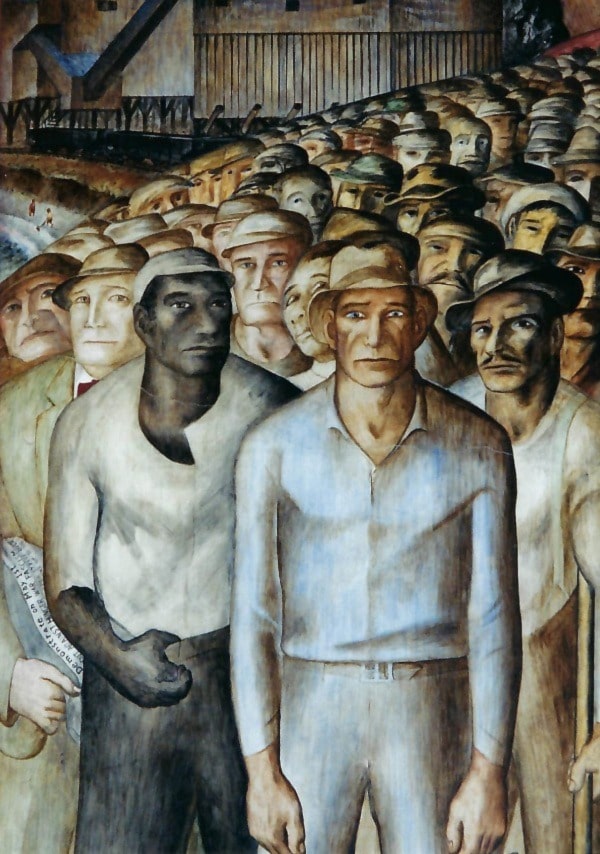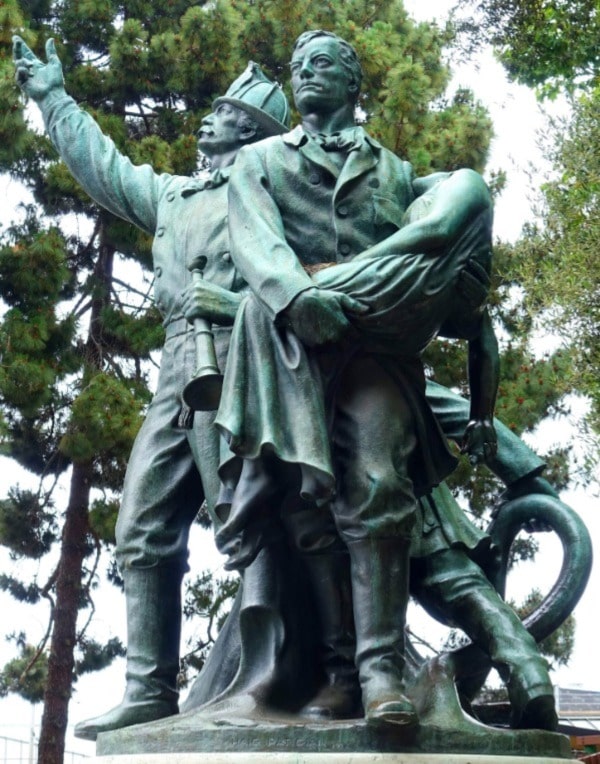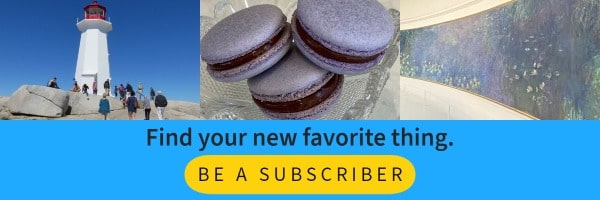|
You could pay to take the small elevator to the top of Coit Tower, but the real view is free with the colorful 1930s murals on the first floor.
Coit Tower - A Concrete Canvas
Coit Tower is located in San Francisco's Telegraph Hill neighborhood. Telegraph Hill is one of San Francisco's famous "Seven Hills" (the first named hills in the city).
Starting in 1853, Telegraph Hill was used to signal the type of ships entering the Golden Gate. The type of ship determined if supplies or communications, such as letters and newspapers, would be arriving soon. From the outside, the 210-foot Coit Tower in San Francisco is not much to look at. According to data from the original builders, the fluted tower was constructed with 175 tons of reinforcing steel, 5,000 barrels of cement, 350,000 feet of lumber, and 3,200 cubic yards of concrete. When completed in 1933, Coit Tower had more than 3,500 square feet of blank wall space; a concrete canvas. In December 1933, work began on the murals and was completed in June 1934 – on time and on budget. Coit Tower officially opened on October 12, 1934, after a 3-month delay because several of its frescoes – which celebrate California's workers – contain images, such as a man reaching for a book by Karl Marx. Coit Tower Murals Artists
The murals cover 3,691 square feet of the interior walls of Coit Tower and the artists were paid one dollar per hour for the mural project and earned $25-$45 per week.
The Coit Tower Murals were painted by 4 women and 21 men: Maxine Albro, Victor Arnautoff, Jane Berlandina, Ray Bertrand, Ray Boynton, Ralph Chesse, Rinaldo Cuneo, Ben Cunningham, Mallette Dean, Parker Hall, Edith Hamlin, George Harris, William Hesthal, John Langley Howard, Lucien Labaudt, Gordon Langdon, Jose Moya del Pino, Otis Oldfield, Frederick Olmsted Jr., Ralph Stackpole, Suzanne Scheuer, Edward Terada, Frede Vidar, Clifford Wight, Bernard Zakheim.
Animal Force and Machine Force (10’ x 36’): This portion of the fresco illustrates man-powered and animal-powered activities, such as hauling fish with a net. This fresco painted by Ray Boynton.
California Industrial Scenes (10' x 24'): In this portion of the fresco, the man with the eyeglasses at a milking operation is a portrait of fellow artist Lucien Labaudt. This fresco painted by Gordon Langdon and H. Clement.
Department Store (10' x 10'): In this portion of the fresco, shoppers rest at the lunch counter where the special is advertised at 25 cents. This fresco painted by Frede Vidar.
City Life (10' x 36'): A city scene with incredible detail, including a fire engine with the number 5, for Lillie Hitchcock Coit. The construction of Coit Tower was funded by a bequest from Lillie Hitchcock Coit who was an honorary member of Knickerbocker Engine Company Number 5. This fresco was painted by Victor Arnautoff with the help of Edward Hansen and Farwell Taylor.
In the background, the aftermath of a car accident. In the foreground, the man in the blue suit (to the left of the newspaper stand) is robbed at gunpoint.
The man in the red sweater (to the right of the newspaper stand) is a portrait of the artist, Victor Arnautoff. A sign for City Lights, the 1931 Charlie Chaplin film, can be seen in the background.
Within the crowd, a police officer stands at the call box.
Workers transport fresh produce under the watchful eyes of managers.
Library (10' x 10'): In this fresco painted by Bernard Zakheim, the artist is joined in the library by family and friends. The man in blue (lower left) is a self-portrait of the artist reading a Hebrew book.
Library (continued): Fellow artists John Langley Howard reaches for a Karl Marx book, Ralph Stackpole learns about the destruction of the Diego Rivera mural at Rockefeller Center in New York City, and Beniamino Bufano reads about his proposed St. Francis statue.
Industries of California (10’ x 36’): In this portion of the fresco, men and women work in a canning factory. This fresco was painted by Ralph Stackpole, assisted by Thomas Hayes. Stackpole, primarily a sculptor, learned the fresco technique for the Coit Tower Murals project.
Railroad and Shipping (10' x 10'): This fresco painted by William Hesthal is just one of the murals in Coit Tower that must straddle a narrow window. On the left of the fresco, a train prepares to depart a railroad yard while a signal worker watches and waits.
Railroad and Shipping (continued): On the right of the fresco, a man peers over his shoulder. At this abandoned wharf, the Third Street Bridge at China Basin can be seen behind the ship.
California Industrial Scenes (10’ x 24’): At a mining operation, unemployed men gather for a protest. This fresco painted by John Langley Howard.
The Public Works of Art Project
During the Great Depression, the Public Works of Art Project (December 1933-June 1934) hired more than 2,500 professional artists and writers across the United States to create original works of art for post offices, government buildings, and parks.
The Coit Tower Murals were created as part of this 6-month project, a Department of the Treasury program under President Franklin Roosevelt. Listed on the National Register of Historic Places, Coit Tower is the largest collection of art from the Public Works of Art Project in the United States. The Public Works of Art Project was succeeded by the Federal Art Project (1935-1943) of the Works Progress Administration (WPA). Often, the frescoes at Coit Tower are misidentified as WPA art. Generally, frescoes are associated with art created during the Renaissance period (14th-16th century) in Europe. This fresco technique was revived in the 20th century by Mexican artist, Diego Rivera (1886-1957). Some of the Coit Tower Murals artists were students of Rivera. These artists soaked the dry, finished concrete walls of Coit Tower with lime water and painted on the wet surface. The first restoration of the murals in 1960 brought in the original artists to assist and consult on restoring the frescoes. The most recent restoration project in 2014 returned the frescoes to their former glory. Lillie Hitchcock Coit
Coit Tower is named for Lillie Hitchcock Coit. Born in West Point, New York, young Lillie moved to San Francisco with her wealthy parents. At the age of seven, Lillie was rescued from a fire by a volunteer member of Knickerbocker Engine Company Number 5 (Knickerbocker 5).
Lillie Hitchcock Coit at the age of 19 in 1862.
Lillie sustained a devotion to the Knickerbocker 5 throughout her life – from embroidering her monogram with the number 5 (LHC5) on all her clothes and riding along with firefighters to a fire to visiting firefighters when they were sick and attending funerals when firefighters died. When Lillie was 20, the Knickerbocker 5 gave her a certificate of honorary membership, which at the time, made Lillie the only female honorary member of a fire department in the United States. When Lillie Hitchcock Coit died in 1929 at the age of 86, her ashes were placed into a mausoleum with firefighting memorials. Lillie left a third of her fortune (nearly $2 million today) to the City of San Francisco "for the purpose of adding to the beauty of the city which I have always loved." The funds from Lillie Hitchcock Coit’s bequest were used to build a statue honoring volunteer firefighters in Washington Square Park and Coit Tower. The total cost of Coit Tower was just over $26,000 (nearly $500,000 today).
Volunteer Firemen Memorial, funded by a bequest from Lillie Hitchcock Coit, is located in Washington Square Park in San Francisco.
The Costs of Coit Tower
Should you pay the price to see the view from the top of Coit Tower?
The observation gallery is not open air, so you would be taking photos through windows. But on a clear day, you can get a good view of many San Francisco landmarks, including the Golden Gate Bridge. Keep in mind that the elevator to the top is small and the observation gallery can be crowded. What is worth the money is the bus ride that brings you to the base of Coit Tower. Why take the bus? No steep climb to Telegraph Hill. No waiting to get a space in the small parking lot (the wait can be 30 minutes or more). You can catch Muni Bus #39 from Pier 39 at Fisherman's Wharf (less than a mile from Coit Tower). If you are paying with cash, you must have the exact fare because the operators do not carry change. See the Muni Bus #39 schedule to Coit Tower. You can buy an inexpensive day pass for unlimited trips on Muni buses, trains, and historic streetcars. Download the MuniMobile App. Coit Tower address: 1 Telegraph Hill Boulevard, San Francisco, California Learn more about Coit Tower on the San Francisco Recreation & Parks website. Source for Coit Tower Murals descriptions: The Living New Deal website provides resources on New Deal projects across the United States, including map guides for New Deal art in New York City, San Francisco, and Washington DC. You can order The Living New Deal map guides here. Comments are closed.
|
Fold GentlyPlaces unexpected. Bakes for home bakers. Books overlooked. Find your new favorite thing. |

